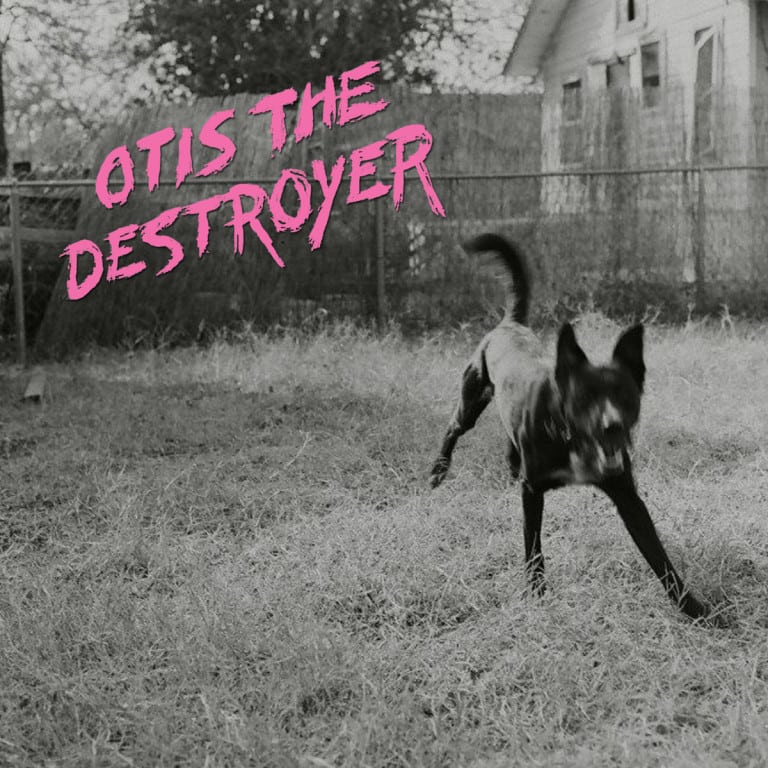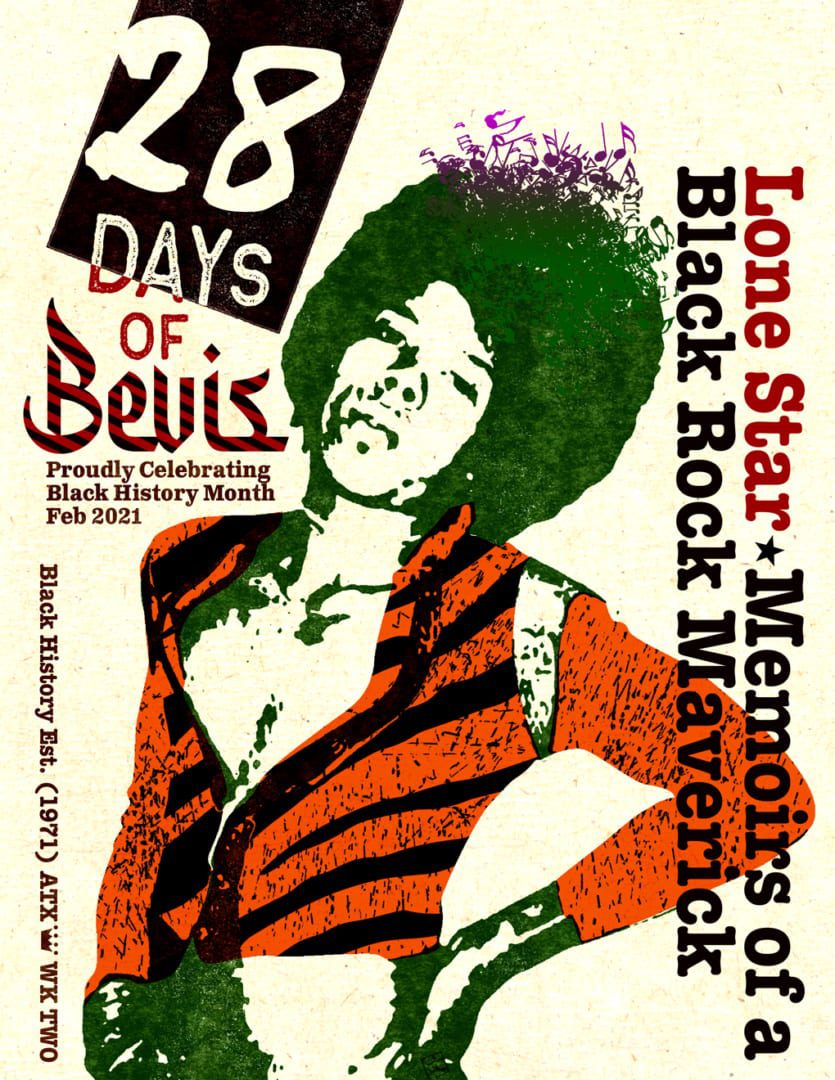28 Days of Bevis Griffin, Day 8: The Apex Mind of Bevis M. Griffin
Written by Darrell M. McNeill
In a more whimsical world, Invisible Man, Ralph Ellison’s opus on Black people’s navigations of White people’s selective cognizance of Black life, could easily be repurposed as The Modern Black Musician’s Rock and Roll Road Atlas. Whereas rock music’s Black forebears have been supplanted by ethnic cleansing, cultural colonists, and corporate money, and the Black progeny of said forebears are locked in a perennial fight for their rightful seat at the front of the table.
As a Black man, artist, entrepreneur, activist, educator, arts administrator, and advocate, my forty-plus year career has been ensconced in this proverbial comic book “never-ending battle.” So, I’m always gratified, even at this late stage, to count Austin’s adopted son, Bevis M. Griffin, as one of my most insightful mentors. In equal measures of forethought, fate, fortune, fluke, and folly, he has built a consistent and robust half-century of music and life in all phases of the business, despite nearly always negotiating the undercurrent as an outlier to a musical genre that’s very much our natural birthright, despite the prevailing counter-narrative. Griffin, drummer, musician, singer, composer, conceptualist, performer, producer, mentor, businessman, and—first and foremost—rocker, began his career in 1971. “My focus was Hendrix, Band of Gypsys, Buddy Miles, Sly & The Family Stone and Funkadelic as my core role models,” he recalls, “I was also an avid fan of the British Invasion: Beatles, Rolling Stones, The Kinks, The Who, Free, Trapeze. I was raised in Los Angeles where on AM radio you could hear James Brown and The Rolling Stones in the same hour. I never had a polemic with my digestion of pop music culture.”
Griffin built his legend in Austin amidst a largely ignored generation of Black rockers who entered the arena in the Post-Hendrix/Sly/Arthur Lee Era when the music business aggressively expunged or obscured the presence of Black faces in the genre. Artists like Jon Butcher, Shuggie Otis, Joan Armatrading, Phil Lynott (Thin Lizzy), Vanetta Fields, Michael O’Hara (The Sheiks), Betty Davis, and countless others were relegated to cult status until the late 70’s/early 80’s when Prince, Grace Jones, bad brains, X-Ray Spex, King’s X, Nona Hendryx, The English Beat, and others expanded that space for the generations of Black rockers that followed.
“We were all unicorns,” Bevis says, “We were such a scarce population to where anytime one popped up, you were automatically intrigued and gravitated toward that individual just to find out what was going on. And you gained some solace in the idea that you aren’t the lone wolf oddball.”
It comes as no shock, then, that Griffin would be a principal figure whose trajectory paralleled the rise of Austin one of the nation’s premier music meccas. From his first glam rock band co-founded at age 17, Franklin’s Mast, transitioning to forty years of radically divergent band projects—Fools, The Skyscrapers, The Bats, The Shades, Banzai Kik, Chill Factor, RawheadnTechX, Spy vs. Spy, Solid Senders, The Cosmopolitans, Dino Lee’s Luv Johnson, One Fell Swoop, Papa Mali & the Instigators, R.C. Banks, The Paradigm—to his current position as an elder statesman on the Austin scene, a counselor to those seeking footing in the business and an interlocutor for the music business community to find raw talent and seamlessly partner with it to continue elevating Austin’s profile as a music leader.
“I got into the Austin music scene when the Austin music scene was actually starting to percolate. By 1971, this being a university center and a large college town, there were twelve or so active nightclubs that you could perform around the city. We had the University of Texas, so apart from club work, the musician’s bread and butter were college functions. We were able to play multiple venues without ever breaking the state line.”
“It was a really great proving ground,” he added, “a great training foundation because we got work a lot. The criterion was very high. The competition was so stiff because it was predicated on high-level musicianship right out the gate.”
My connection to Bevis comes through our mutual familyhood in The Black Rock Coalition, the nation’s premier advocacy group for alternative/progressive artists of color. No surprise, Bevis made a pivotal sojourn to The Big Apple from 1983 to 1988 with his star on the rise and making connections with the label industry here. He was an early BRC adapter with 15 years in the business by then, and performed in several of the BRC’s first events, sharing his experiences as a working musician, and allying with seminal musicians like Living Colour, Lester Bowie, Bernard Fowler, Geri Allen, Funkadelic, bad brains and others. “I really felt for the first time in a real, real long time that now I was in a great family of musicians. Everybody was embracing me. It just gave me the best feeling.”
Now fully embracing his new phase as an Austin OG, Griffin carries a sense of fulfillment about his career as an artist, despite not having catapulted into the forefront of the rock scene as he’d originally sought. “I’d gotten close enough to breaking through to where I didn’t feel defeated. Coming back, I was a much stronger musician than when I left, traveling in a much stronger pack. I was a fully formed creative by then. I was no longer an aspirant, I was a guide. Automatically, I galvanized the cream of the crop here and everybody who was capable wanted to work with me. It was a great spiritual uplift, a great psychological relief, to feel you had another support system, people who were with you, behind you and in favor of you.” These days, Griffin presides over three development entities: Deux Voix Ltd. (Artist Development/Management Consultant), DV Apex Solutions (Black Music History Education), and DV Apex Creative TV & Film Production. His combined businesses represent full-service management, booking, public relations, production, imaging, and development company just outside of downtown Austin. In addition to promising up-and-comers in the local scene, he has consulted notable Black rock artists such as Living Colour, Francis M’Bappe, Norwood Fisher of Fishbone/Trulio Disgracias, Freekbass, Kelvyn Bell, Andre Cymone, and proto-punk legends DEATH.” Anybody who had the fortitude and the wherewithal to commit to the endeavor of being a career musician, I wanted to put them in a mindset to where they understood what the landscape was. Being a creative at my core, it was easy for me to step into the situation of being a coach. The negative experiences I encountered as an artist informed me on how I could actually be more beneficial as a consultant.”
Further, in addition to advising venues, business groups, community leaders, and local politicos about the successful integration of music-driven projects, he has branched into educational initiatives to illuminate the role of Black artists in rock music, as well as a media project, “Black Is The Apex,” a series of vignettes elevating the profiles of long-overlooked bedrock Black artists who laid rock music’s foundation. Griffin insists his current role—as a consultant, as an advocate for the Austin community, and as a champion of alternative Black culture—has been every bit as fulfilling as his former role as an artist. “To me, it’s a culture. It’s not just a passing fancy, it’s not just a trend, it’s not just a fad. It’s a culture.”







